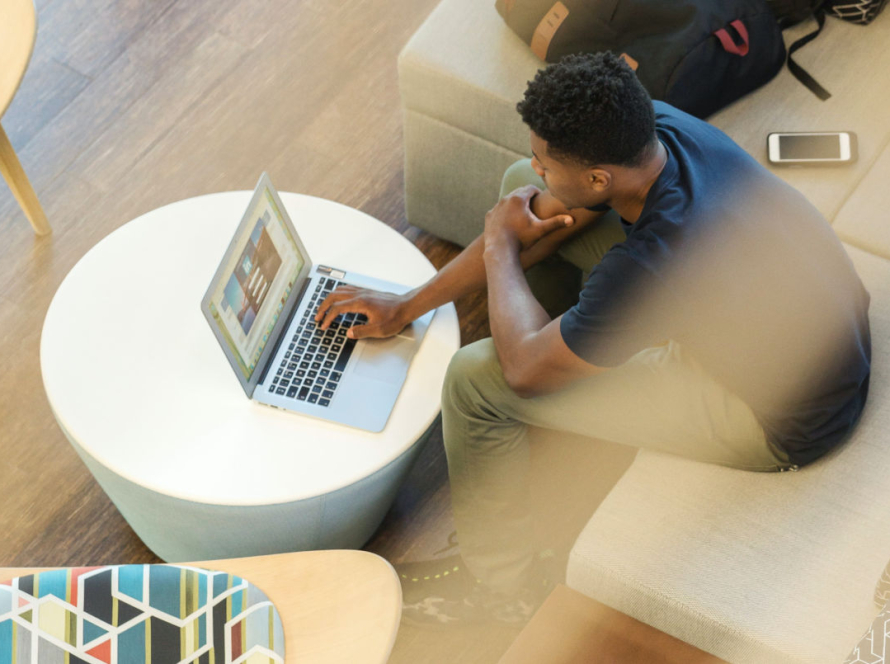In the Great Encyclopedia of Coworking that someone will one day write, software engineer Brand Neuberg will be given a special entry – and honor –. After all, it was his entrepreneurship that led him to give practical spatial expression to the first coworking, in 2005, with the advent of the World Wide Web, in San Francisco (United States of America). So, if anyone asked what is a coworking space, your Hat Factory was the epitome of the concept.
The facilities were – nothing more, nothing less – a loft converted into a collaborative work area, which regularly received three professionals from technological métiers (the 9 to 5 group) and other independents eager to share knowledge and know-how.
From that time onwards, coworking centers gradually proliferated throughout the world and assumed the basic characteristics we know today: work spaces that provide all the infrastructure and services of a normal office (organization, logistics, secretariat, cleaning, high-end telecommunications speed, meeting rooms, cafeteria/canteen etc.), in an individual or group environment, for which professionals pay (monthly, weekly, daily or even hourly, depending on their needs) to carry out their work activities.
For many, it is a way to get rid of the many different expenses of a conventional office, to have the support to support the activity they need, or even a way to obtain a business/fiscal address. Anyway, a matter of cost-benefit. Including for companies.
For others, the option, after overcoming the doubt about what a coworking space is, presents as an opportunity to eliminate the isolation of remote work and, at the same time, enhance networking, through close contact with professionals from different business areas.
What is a coworking space – the question for which architects and designers give new answers
The specifics of the functioning of collaborative spaces have already motivated us to write more than one article, here in this Cowork Lab’s digital stronghold. We have already covered the advantages and disadvantages of telework, and, additionally, we have followed the routes of productivity at work from distance.
We have also seen how the pandemic situation caused by Covid-19 is giving rise to a growing demand for spaces suitable for remote work and instilling in managing organizations new ways to make the installations sanitary safe and, in the threading, even more functional and efficient , productively speaking.
In fact, the number of those asking what is a coworking space in the current context is increasing. Side effects of the new coronavirus on the job market are among the reasons.
More than that, architects and designers, who, through experience felt on their own skin over decades, are well aware of the advantages of teleworking and are appropriating the new teachings, born of the pandemic, to (re)design spaces and buildings of coworking, with full responses to new challenges.
This change has just started, but the contours of engineering and architecture (interiors) for well-being adaptation to the new reality are already visible.
Read also: How to work remotely: the balance of the new labor paradigm
An example from London…
In London, Paddington Works, for example, is being pointed out as a paradigm of what a coworking space in the post-pandemic is.
In addition to the facilities being designed to provide versatile and agile environments, to meet the requirements of various activities, the structure incorporates constructive details that have health as a concern.
The air circulation system is one of them: the filtration system, which is antiviral, carries 25% more fresh air into what is considered normal. On the other hand, the luminaire has intelligent LEDs, which adapt the color temperature of the lights throughout the day, to match the biological cycle of its occupants (and enhance resource savings and the preservation of the environment)…
To the air quality and good natural (and artificial) light are added details that lead to a subdued aesthetic and practically irreproachable acoustics.
With two floors, the building displays a mix of environments. Private offices, shared studios, meeting rooms, a multipurpose auditorium (which simply looks like a huge set of wooden steps, adaptable to different circumstances), where each step houses a set of drawer tables, which support laptops and office material.
All designed so that it is possible to form small communities (), with the right to rest areas, kitchen and social space. This is because clustering can promote distance between people, so that, if necessary, it is possible to contain/minimize the spread of any disease.
Despite having been “thrown to paper” even before the pandemic by Covid-19, the project already included contactless hand sanitizer devices and other antimicrobial accessories…
The building was built to provide a healthy and happy professional experience, but also to allow for a business culture indoors, despite the fact that its inhabitants are working remotely.
Read also: Remote work productivity: the (high) performance wears casual
What is a coworking space… in addition to an anywhere office
In addition to being an example of what a coworking space is, Paddington Works is being considered an almost perfect exercise of the concept of anywhere office, which calls for the appreciation of the simplest details and which the pandemic highlighted as more vital for good – general seating: a walk in the park, conversations with co-workers, among others.
Now, with hybrid work on the rise, and probably to remain on the rise in the years to come, and with the business fabric realizing the advantages of remote work, sector experts estimate a growth in coworking spaces in eminently residential areas of cities , all over the world, so that employees can work close to their homes, or in areas with good transport access.
It should be noted that, some surveys and reports, worked on the second wave of the pandemic attest that, in the next three years, almost 30 percent of companies believe that more than 70% employees will continue teleworking (the ratio was only 10 % before Covid-19…).
As for the employees of this business fabric, close to 45% expected to be working remotely, more than half of the working week. Hence, a rapid growth of hybrid collaborative workspaces is expected.
In addition to this scenario, due to remote and/or hybrid work, the vast majority of companies (in dozens and dozens of countries) managed to save on expenses with real estate assets, expecting even greater savings in the years to come.
The end of “normal offices”?…
” There is no evil that does not bring good “, goes the saying… Which, in the present case, means nothing more than the ability of human ingenuity to reflect on the imposed change and undertake improvements to positively impact attitudes and habits, whether in the work environment or in the economy of human resources.
Far from signifying the end of traditional offices, the pandemic crisis has come to over-expose the changes that are already being felt in the interior design and workflow of the so-called “normal” spaces. By the way, coworking spaces have been, little by little, opening this window of change, due to the increase of teleworkers in the world. And that’s why we see more and more people asking what a coworking space is – in an attempt to understand the differences in the sector’s market and find out which one is best suited.
It doesn’t seem like it, but the recent history of architecture of a more commercial nature demonstrates how the work spaces we know as such have undergone, in terms of spatial organization and use of technologies and equipment, through several profound transformations. And we are going through another period of rupture with the “past” – still our present, the present one!… Thanks to the popularization of remote work.
Anyway, if there’s one thing right it’s… the unpredictability of change.
A mere example: on the eve of the eye of the pandemic hurricane, a paper by the MIT – Massachusetts Institute of Technology on Future Work signaled remarkable advances in the fields of robotics, autonomous vehicles and artificial intelligence, and without the world and the market of have been “turned inside out” by increasing automation.
Well, a 2021 study by the consultancy McKinsey estimated that 6% of workers may need to find new jobs soon due to automation and the pandemic…
And there are those who say that this is merely the beginning!
Did you like our article about what is a coworking space? It provides an insight into the present in the domain and gives a glimpse into the future of shared workspaces in the world. But in Mozambique, and more precisely in Maputo, the country’s capital, you will also find reference coworking offices, meeting your needs. See Cowork Lab’s offer…
Additional information
Pedro Ferreira
CoWork Lab




